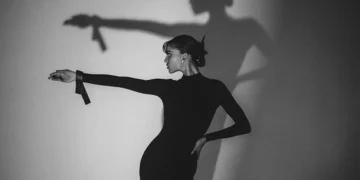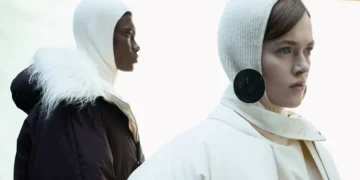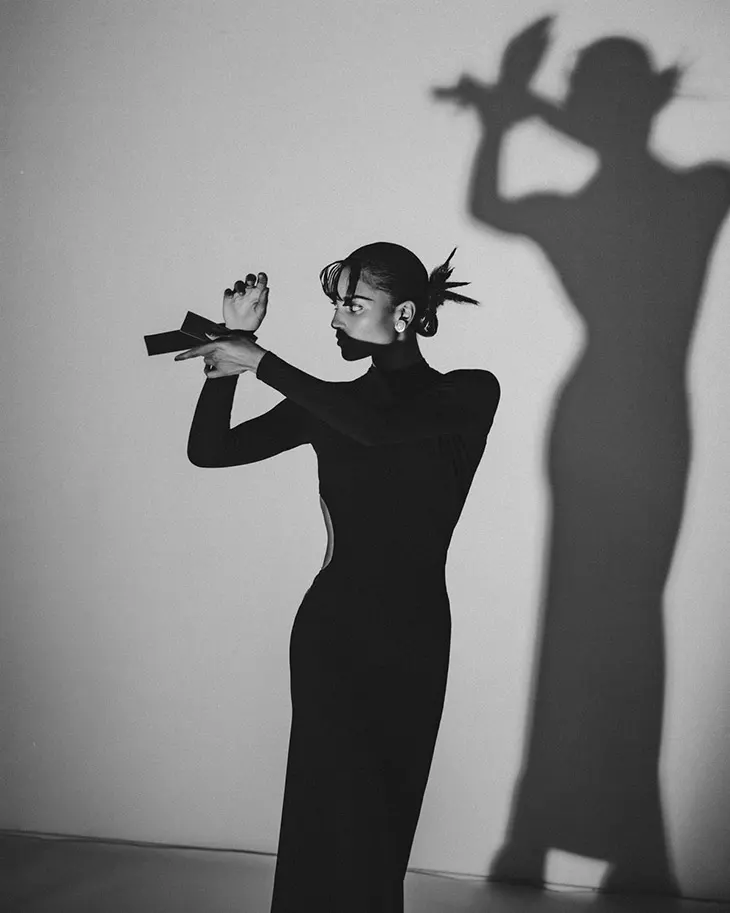
She walks through her front door at 8 PM, kicks off her boots, drops her bag, and heads straight to the kitchen to pour a glass of wine. The oversized blazer comes off, revealing a sleek nude bodysuit underneath her high-waisted jeans. But unlike the shapewear horror stories of the past, the desperate bathroom struggles, the red marks, the sweet relief of finally peeling it off, she doesn’t even think about changing. This sculpting bodysuit has been with her through nine hours of meetings, a lunch presentation, and after-work drinks. It’s staying on through dinner and Netflix. Maybe even sleep.
This is the new reality of shapewear: pieces so comfortable they’ve transcended their category, becoming base layers, outfit foundations, even standalone tops. Gone are the days of secret suffering, of shapewear as a special-occasion torture device endured for the sake of a smooth silhouette in photos. Today’s shapewear lives openly in our wardrobes and on our bodies, soft enough for all-day wear, stylish enough to show, supportive enough to make us feel held rather than squeezed.
The shift from hidden squeeze to everyday essential marks more than a technical evolution in fabric and construction. It signals a fundamental change in how we think about our bodies and the clothes that shape them. We’re no longer willing to trade comfort for contour. We want both, and increasingly, we’re getting it.
From Hidden Squeeze to Normal Clothing
The old shapewear playbook was built on shame and secrecy but also as a specific extension to sportswear. Don’t let anyone know you’re wearing it. Excuse yourself to the bathroom if it rolls down. Pretend those visible lines under your dress are just seams. The whole category operated on the assumption that shaping your body was something to hide, a deception rather than a choice.
Then social media changed everything. Suddenly, influencers were filming “get ready with me” videos that included their shapewear as matter-of-factly as their skincare routine. Celebrity shapewear lines turned body-sculpting into billion-dollar businesses by making it aspirational rather than embarrassing. The conversation shifted from “I would never admit to wearing shapewear” to “Let me show you exactly which bodysuit I’m wearing under this outfit.”
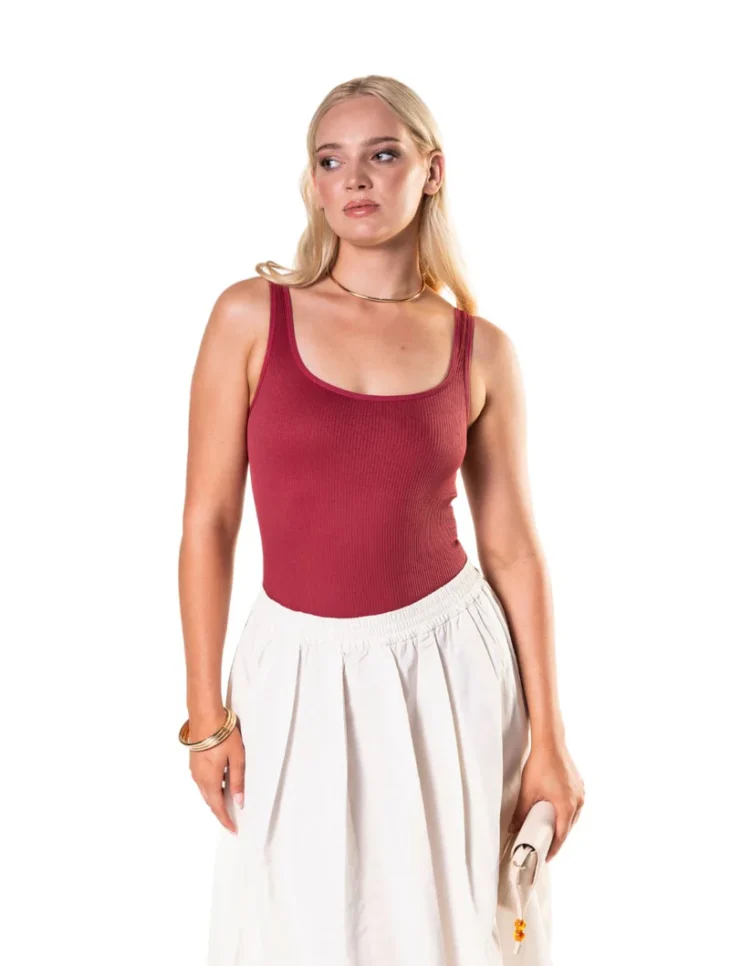
This transparency coincided with a design revolution. Shapewear started looking less like medical garments and more like minimalist luxury basics. Clean lines replaced visible boning. Soft, technical fabrics replaced scratchy power mesh. Bodysuits began appearing not under clothes but as clothes, styled with blazers, worn with jeans, treated as foundational pieces rather than hidden infrastructure.
The billion-dollar shapewear brands deserve credit for normalizing the conversation, but they also created a new problem: shapewear as lifestyle brand, as identity, as something you need to buy into wholesale. The real innovation is happening with smaller labels that focus less on cultural moments and more on everyday wearability.
What “Second-Skin” Shapewear Means
“Second-skin shapewear” isn’t just marketing speak – it represents a genuine shift in construction philosophy. These pieces provide light to medium support through strategic compression zones rather than all-over squeeze. They use soft, stretchy, breathable fabrics that move with your body rather than against it. The cuts are clean and minimal, designed to disappear under clothes or stand alone as legitimate wardrobe pieces.
The categories have evolved beyond the traditional corset-inspired pieces. Sculpting bodysuits now come in tank, long-sleeve, and mock-neck variations that look like elevated basics. High-waisted shorts smooth the midsection and thighs without creating bulges at the hemline. Soft compression tops provide bust support and core smoothing without underwire or heavy elastic.
Brands like HEYSHAPE focus on pieces you can wear through a whole workday or flight, not just for a few hours at an event, think sculpting bodysuits and soft-control shorts that feel closer to loungewear than old-school corsetry. The goal isn’t transformation but refinement, not restriction but support.
This approach acknowledges how we actually live. We sit at desks for hours. We eat meals. We bend to pick up children or groceries. We need shapewear that accommodates real movement and real bodies, not just standing poses in perfect lighting.
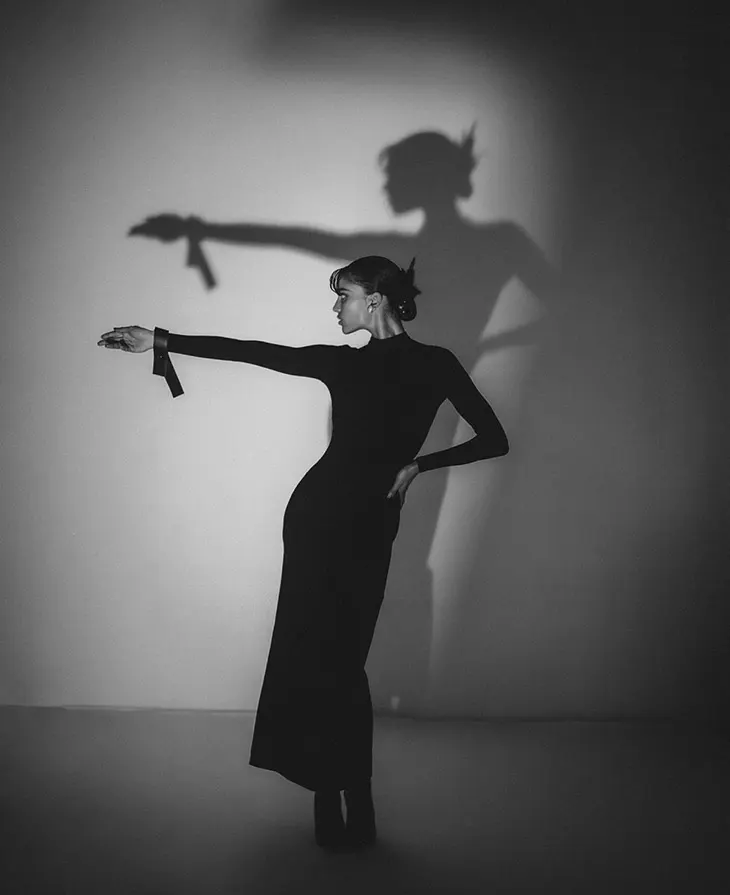
Comfort as the New Luxury
In fashion’s current landscape, where designer sweatpants cost more than cocktail dresses and luxury brands compete on the softness of their cashmere, comfort has become its own form of luxury. Shapewear is following suit, with comfort emerging as the primary selling point rather than an afterthought.
This comfort manifests in specific design choices. Breathable, moisture-wicking fabrics that don’t trap heat or sweat. Flat-locked seams that don’t create ridges under clothes. Wide straps that distribute pressure rather than cutting into shoulders. Silicone strips that prevent rolling without feeling like tape on skin. Extended size ranges that acknowledge bodies beyond the traditional S-M-L paradigm.
A new wave of labels treats comfort as the main design brief: soft technical fabrics, wide straps that don’t dig in, silhouettes that move with you instead of against you. One brand (see more) even designs bodysuits and shorts you can wear from the sofa to a dinner reservation without changing, blurring the line between underwear and outfit.
The comfort conversation extends beyond physical sensation to psychological ease. Shapewear that doesn’t require constant adjustment, that doesn’t announce itself through visible lines or awkward bunching, that doesn’t make you hyperaware of your body all day, this is the new standard.
How People Actually Style Everyday Shapewear
The styling possibilities of modern shapewear extend far beyond “invisible under a dress.” Fashion-forward dressers are treating these pieces as legitimate wardrobe foundations, building entire looks around them.
For the office, a neutral sculpting bodysuit becomes a sophisticated base under tailored trousers and an oversized blazer, paired with pointed-toe mules or minimalist sneakers. The bodysuit eliminates the need for tucking, provides smooth lines, and offers light support throughout the day, professional polish without sacrifice.
Evening looks embrace shapewear’s sleek silhouette more boldly. A black long-sleeve bodysuit pairs with a silk slip skirt or leather pants, topped with a statement coat and heeled boots. The bodysuit isn’t hidden but celebrated as part of the outfit’s architecture, its clean lines and matte finish providing the perfect counterpoint to more decorative pieces.
Travel demands maximum versatility and comfort. Soft high-waisted shorts worn under an oversized sweatshirt and leggings create a smooth silhouette that survives long flights and still looks pulled-together at baggage claim. The shorts provide gentle compression that helps with circulation during travel while eliminating the need for multiple undergarments.
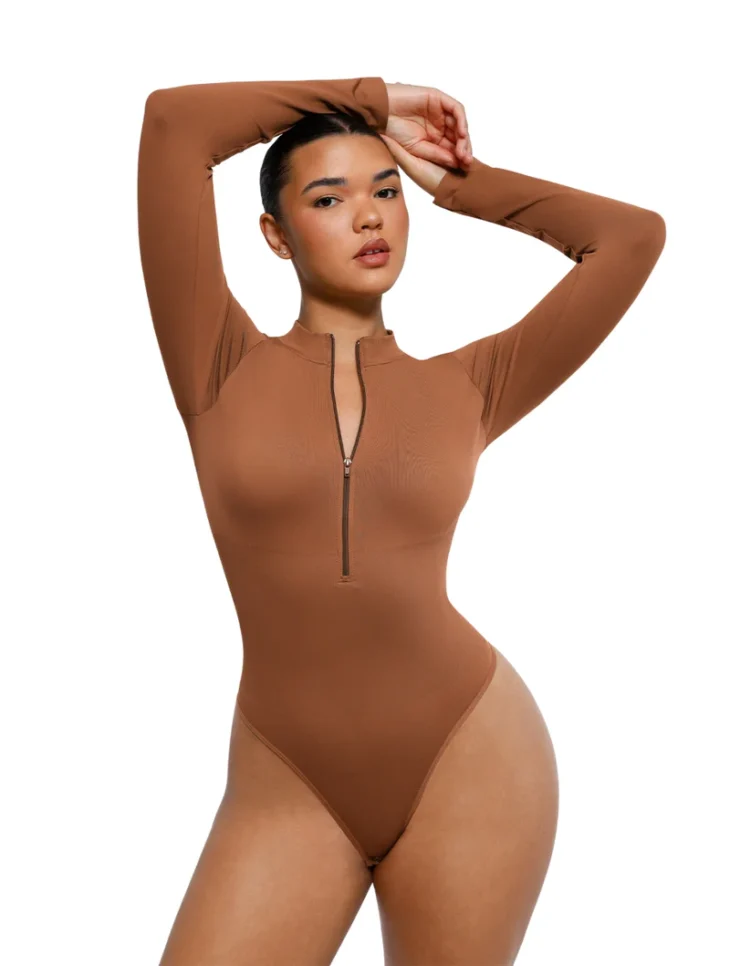
At home, the boundaries blur completely. A soft bodysuit replaces both bra and top under wide-leg lounge pants, creating an outfit that works for remote meetings, quick errands, or evening relaxation. No quick changes needed, no uncomfortable transitions between “public” and “private” clothing.
Picking Shapewear You Won’t Regret in 2 Hours
Let’s be clear about what modern shapewear can and cannot do. It smooths lines, provides support, creates a streamlined silhouette under clothes. It doesn’t burn fat, permanently reshape your body, or replace a properly fitted bra for all occasions. Setting realistic expectations is the first step toward shapewear satisfaction.
The comfort test is non-negotiable: Can you breathe normally? Can you sit without feeling like you’re being cut in half? Can you eat a normal meal without discomfort? If the answer to any of these is no, the shapewear isn’t worth it, regardless of how it looks.
Fabric quality matters more than you might think. Cheap, plasticky materials don’t breathe, leading to overheating and discomfort. They also tend to pill, lose elasticity quickly, and create that dreaded “sausage casing” effect. Look for technical fabrics with names like modal, bamboo, or proprietary blends that promise moisture-wicking and temperature regulation.
Fit is everything. Shapewear should feel like a firm hug, not a python’s embrace. Pay attention to where pieces hit on your body, shorts that cut into thighs, bodysuits that are too short in the torso, or straps that dig into shoulders will only become more uncomfortable over time. Comfort-focused brands such as HEYSHAPE build their fit around feedback from people who want support that survives an entire day in the office, not just a single photo moment.
Consider your actual wardrobe when choosing pieces. If you live in pants, investing in smoothing slips makes less sense than high-waisted shorts or bodysuits. If you prefer dresses, look for pieces that won’t create lines at the hemline or require constant adjustment.
The Quiet Revolution
The best shapewear is the kind you forget you’re wearing. This isn’t about deception or denial – it’s about integration. When shapewear becomes as unconscious as any other layer of clothing, when it supports without restricting, smooths without squeezing, it stops being about changing your body and becomes about supporting the body you have.
This shift represents something larger than fashion evolution. It’s about rejecting the binary between comfort and appearance, between “real” clothes and “foundation” garments, between the body we have and the body we present. Modern shapewear acknowledges that most of us want to feel held and supported, that smoothing lines under clothes isn’t about shame but about choice, that comfort and contour aren’t mutually exclusive.
Shapewear you can actually live in doesn’t demand that you change your body; it quietly adapts to the life you already have. It survives your commute, your workday, your dinner plans. It moves from private to public spaces without announcement or apology. It exists not as a secret or a statement but as simply another piece in the puzzle of getting dressed.
The real revolution isn’t in making shapewear visible or invisible, celebrated or hidden. It’s in making it so comfortable, so wearable, so normal that the question isn’t whether to wear it but simply which piece matches today’s plans. In this new paradigm, shapewear isn’t about special occasions or desperate measures. It’s about Tuesday. It’s about comfort. It’s about living.
